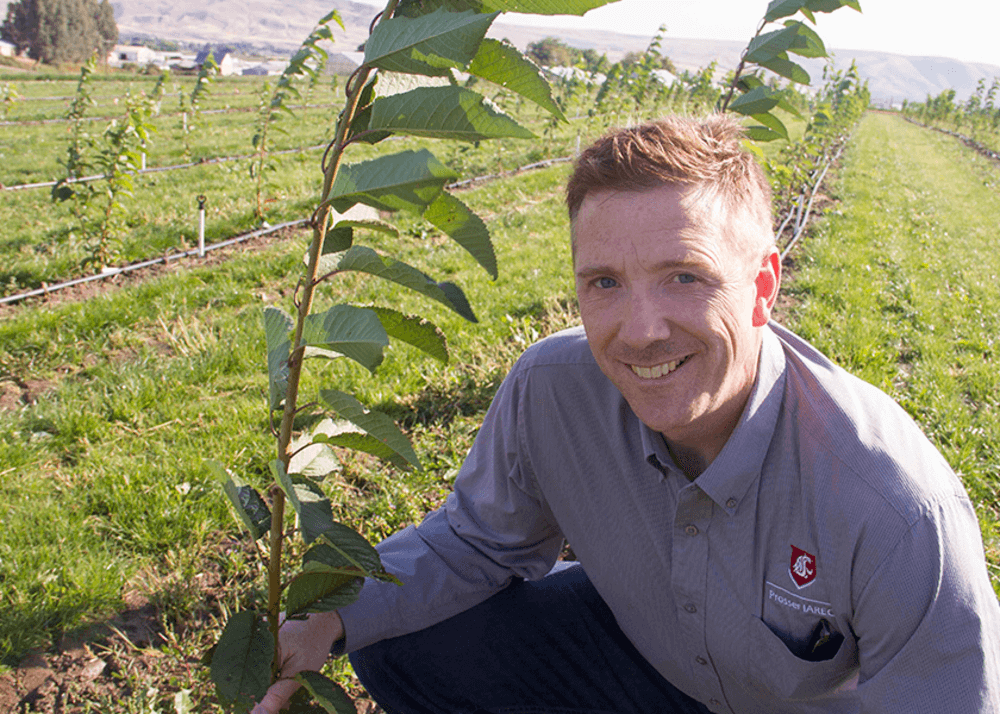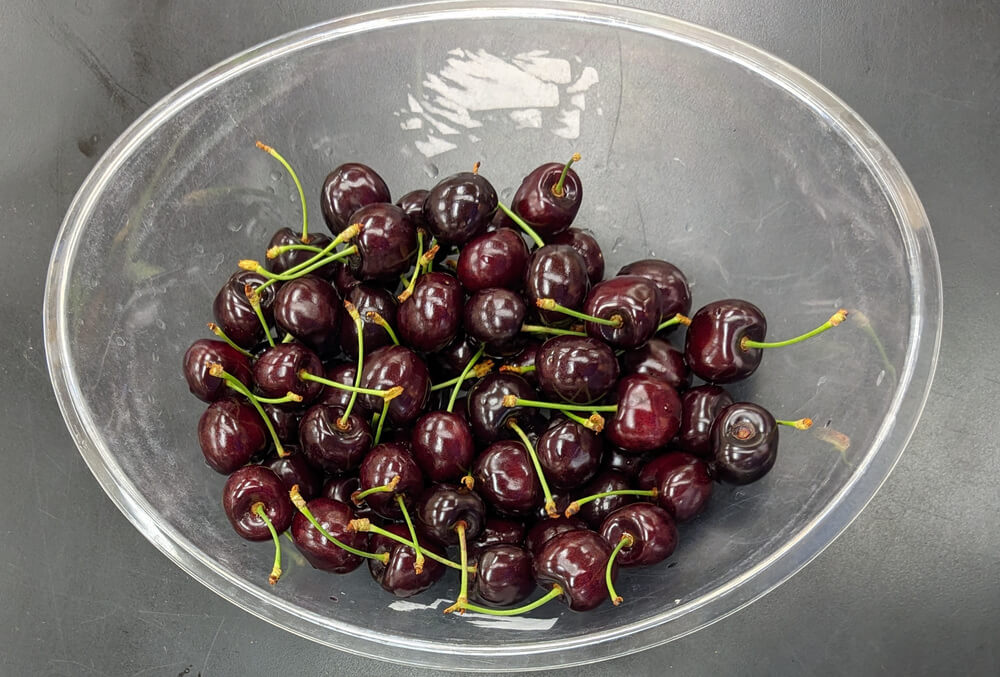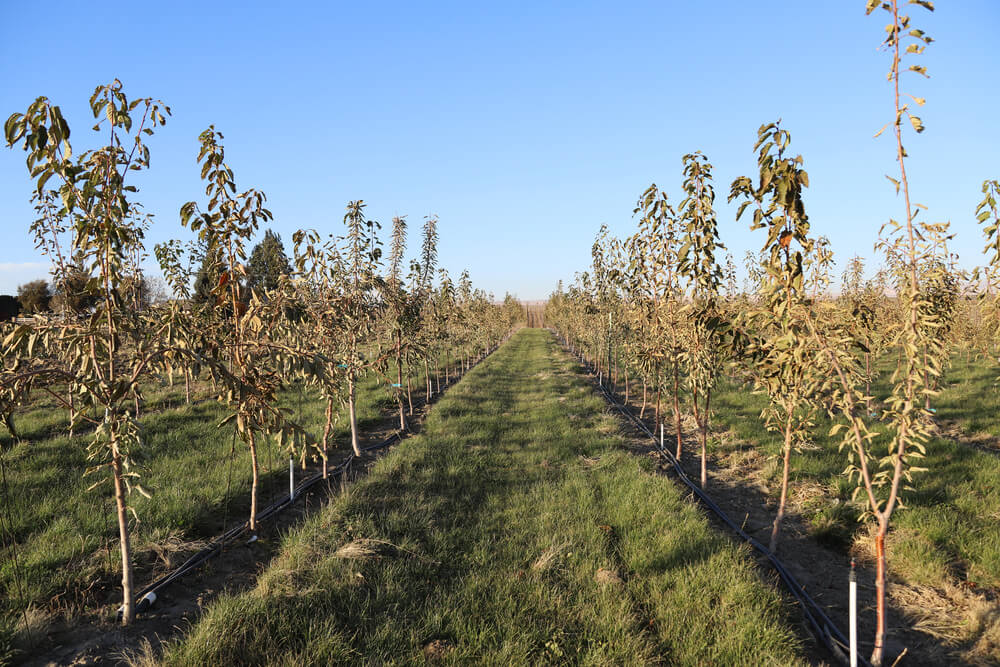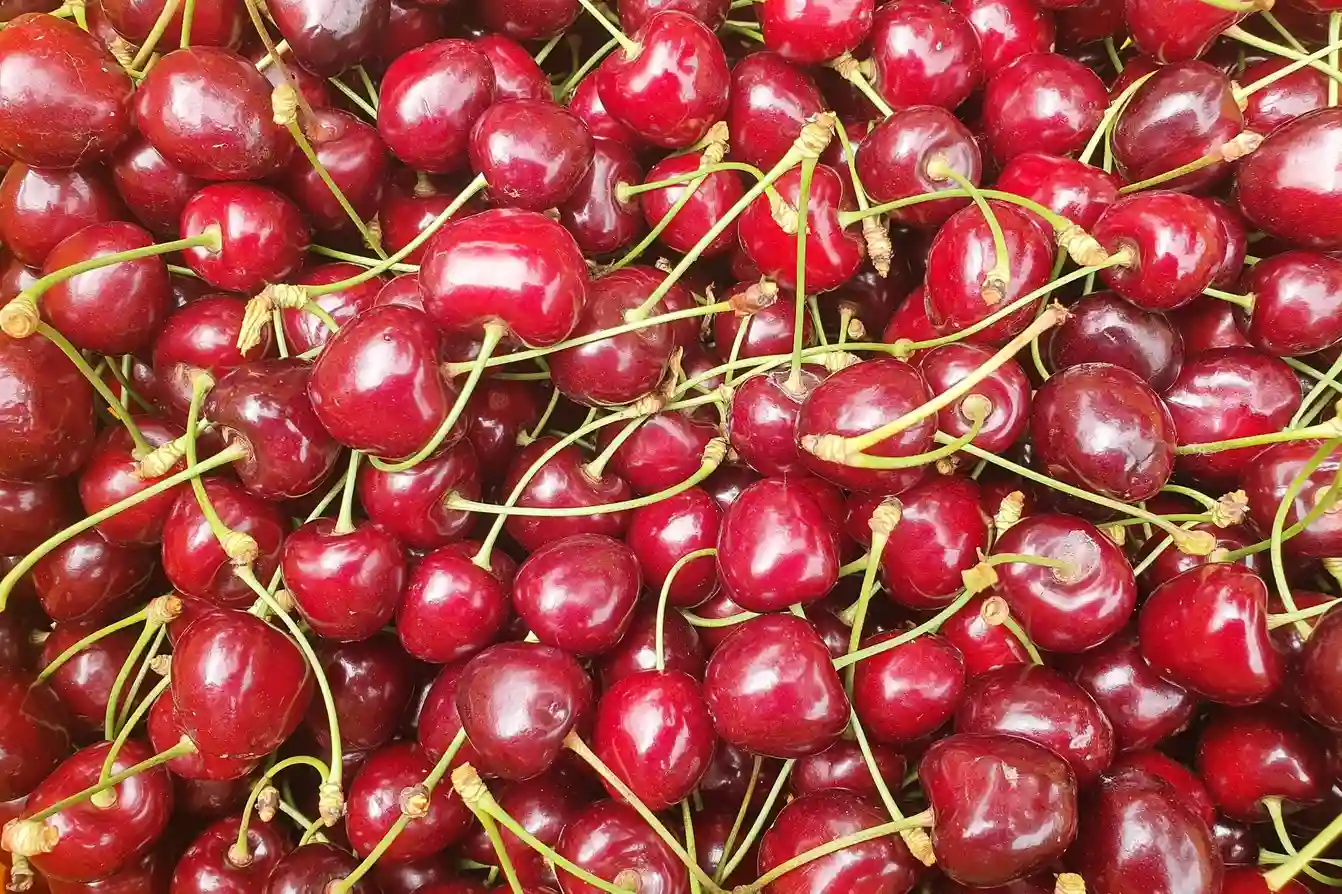The sweet cherry breeding program in Prosser, Washington is in the midst of the Pacific Northwest, the largest cherry producing region in the USA, and has been developing new varieties for more than 60 years. Initially begun by researchers from the United States Department of Agriculture, the first major release was ‘Rainier’, a yellow/blush cherry released in 1960. ‘Rainier’ cherries are famous for their unique coloring and sweetness, and command premium prices.
Beginning in the 1960s, the breeding program has been led by Prosser-based researchers from Washington State University (WSU). Important varieties released by WSU include the early-ripening ‘Chelan’, ‘Tieton’, which ripens slightly later, and the mid-season ‘Benton’. The cherry breeding program has continued to expand and improve since Dr. Per McCord was hired in 2018.
Laboratory and greenhouse spaces were updated, and a 268 m2 high tunnel/hoop house was constructed to allow for crossing indoors using potted trees. Most recently (2023) a Tomra Invision2 optical sorter was installed for grading fruit for size and defects.
The cherry breeding program is organized around a four-stage pipeline: crossing, seedlings (Phase 1), small, replicated trials (Phase 2), and commercial-scale trials (Phase 3). Parents are chosen based on phenotypic performance, historical reports, and DNA information.
 Per McCord, cherry breeder at Washington State University. Source: The Paker.
Per McCord, cherry breeder at Washington State University. Source: The Paker.
Major targets for new varieties include large fruit size, firmness, early (or late) ripening, self-fertility, and disease resistance. Crosses (normally 50-60 per year) are made in the orchard and increasingly in the hoop house which extends the crossing season and provides frost protection.
Flowers are pollinated by hand or using mason bees (Osmia lignaria) or bumblebees (Bombus impatiens) in netted cages. A small percentage of seed is collected from open-pollinated mother trees. For crosses targeting early ripening or interspecific hybridization, embryo rescue is used to increase the number of viable seedlings.
DNA testing and selection occurs at this stage, and currently includes tests for self-fertility, powdery mildew resistance, firmness, and cracking. Trees in Phase 1 (currently more than 7,000 seedlings) are grown on their own roots. Once they begin bearing (usually 3-4 years) they are evaluated for at least two years before being advanced to Phase 2, which currently contains 12 selections.
 Panel test on new WSU cherry selection. Source: Good Fruit Grower.
Panel test on new WSU cherry selection. Source: Good Fruit Grower.
Trees in Phase 2 are grafted onto precocious rootstocks (Gisela-6 and Gisela-12) and planted in replicated, randomized trials at three locations in Washington and Oregon. Phase 2 selections are evaluated for 2-3 years before advancement to Phase 3, the final stage before release. This phase of testing utilizes larger plantings to generate enough fruit to be run over a commercial packing line.
There are currently 3 selections in Phase 3 trials. ‘R19’ ripens with ‘Chelan’ and is self-fertile, firm, and very sweet for an early cherry. ‘R3’ ripens several days after ‘Chelan’, crops consistently, and has large fruit with a meaty texture. ‘R29’ is a mid-season cherry ripening several days after ‘Bing’ and is self-fertile with very large fruit. The first Phase 3 harvest of ‘R19’ and ‘R3’ occurred in 2023, and the first harvest of ‘R29’ is expected in 2024.
 WSU cherry selection ‘R3’, an early-ripening cherry that is currently in final (Phase 3) trials.
WSU cherry selection ‘R3’, an early-ripening cherry that is currently in final (Phase 3) trials.
 Young cherry seedlings at the WSU research orchard near Prosser, Washington, USA.
Young cherry seedlings at the WSU research orchard near Prosser, Washington, USA.
 Dr. McCord with the new Tomra Invision2 optical sorter.
Dr. McCord with the new Tomra Invision2 optical sorter.
Per McCord, cherry breeder at WSU
Cherry Times - All rights reserved

















